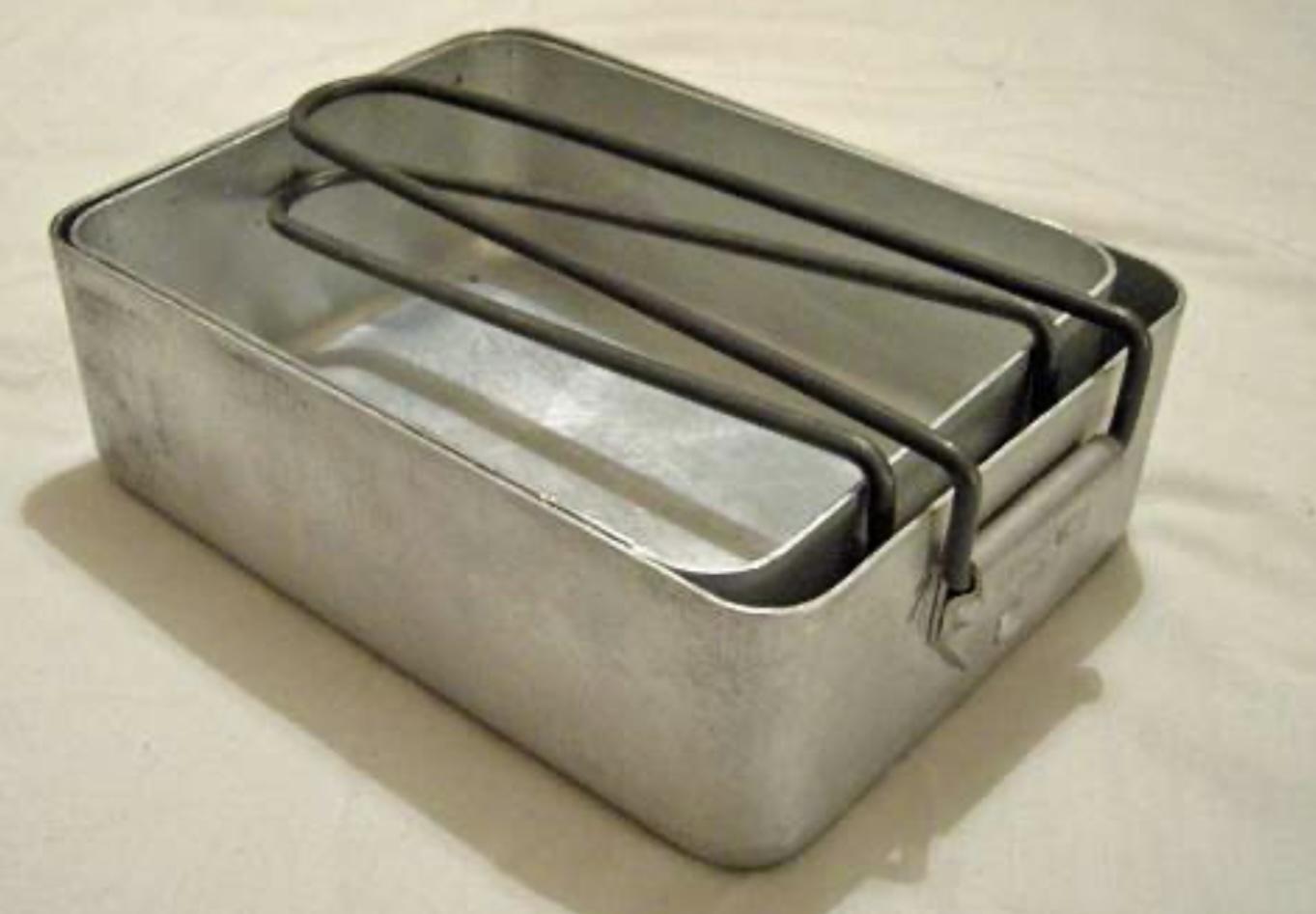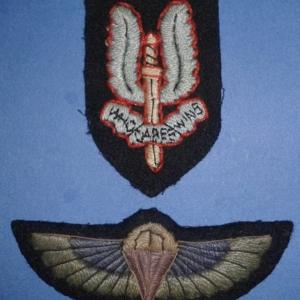
British aluminium mess tins
The British aluminium mess tin introduced in 1936 was a highly practical item of field equipment, designed in conjunction with the Pattern 1937 webbing set. Created to meet the needs of a mobile and modernizing army, the mess tin was simple, compact, and highly functional. Rectangular in shape with rounded edges and nesting halves, it featured fold-out wire handles and was constructed of lightweight aluminium, making it both durable and easy to carry.
Unlike round or oval-shaped mess kits used by some other nations, the rectangular design allowed for efficient packing, stacking, and storage in the soldier's webbing. Its structure allowed it to be used for cooking directly over a fire, eating from, boiling water, and cleaning, among other tasks. It was a no-frills tool of military life that embodied the British Army’s preference for rugged, multipurpose gear.
Manufacturing and Main Factories
Several British firms produced these mess tins in the lead-up to and during the Second World War. Production began around 1936 and continued into the early 1940s, with slight variations in construction depending on the factory.
Factories involved in the manufacture included companies like the London Aluminium Company in Birmingham, Sellman & Hill in Wolverhampton, and N.C. Joseph in Stratford-on-Avon. These firms utilized various techniques for assembling the tins, including welding or riveting the handle attachments. Some later designs included additional reinforcing bands or thicker aluminium to improve durability under harsh conditions.
Each tin was typically marked with the manufacturer's initials and the date of production, stamped on the bottom or side. These markings have become helpful identifiers for collectors and historians seeking to trace their origins. Though simple in design, the tins had to meet strict durability standards to withstand life in the field.
Versatility in the Falklands War
Decades after their initial introduction, the 1936 pattern mess tins remained in service and saw notable use during the 1982 Falklands War. Their versatility extended beyond just holding food or boiling water. In the rugged and often harsh environment of the South Atlantic, British soldiers, including members of the Parachute Regiment, used their mess tins as improvised tools.
When digging shallow shell scrapes—individual protective trenches—soldiers sometimes used their mess tins in conjunction with bayonets or entrenching tools. The aluminium construction, though not intended for heavy-duty digging, proved resilient enough for emergency use. Stories from veterans recall how precious and indispensable these mess tins were. In an environment where resupply was challenging, even something as simple as preserving water in a mess tin could be a matter of survival.
The tin’s enduring presence across multiple generations of British military operations attests to the soundness of its design. Even when more modern equipment became available, soldiers often held onto their mess tins due to their reliability and familiarity.










